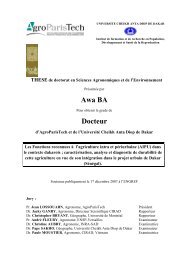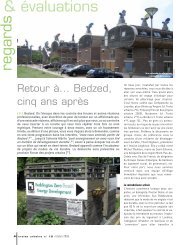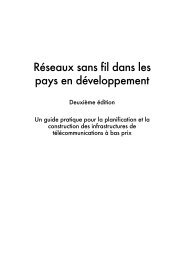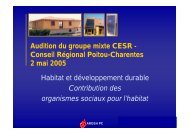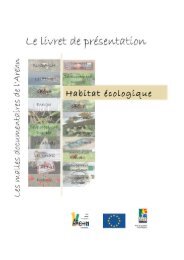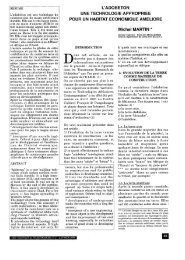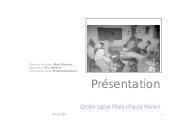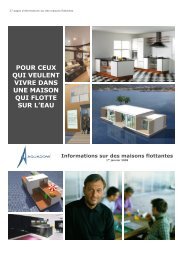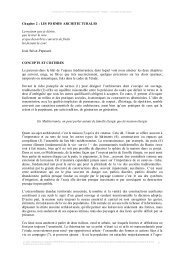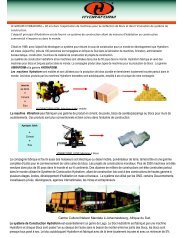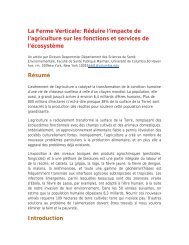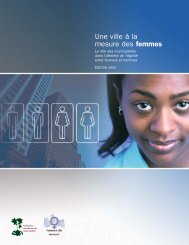Habitat-groupe-personnes-agees - Habiter-Autrement
Habitat-groupe-personnes-agees - Habiter-Autrement
Habitat-groupe-personnes-agees - Habiter-Autrement
You also want an ePaper? Increase the reach of your titles
YUMPU automatically turns print PDFs into web optimized ePapers that Google loves.
Où vivre mieux ?<br />
Le choix de l’habitat groupé pour <strong>personnes</strong> âgées<br />
Summary<br />
The report "Où vivre mieux? Le choix de l’habitat groupé pour <strong>personnes</strong> âgées" specifically<br />
addresses one type of living environment available to elderly people today: community living.<br />
It constitutes an extension of the report by Professor Carlson "Où vivre vieux? Quel éventail<br />
de cadres de vie pour quelles <strong>personnes</strong> vieillissantes ?", published by the King Baudouin<br />
Foundation in 1998.<br />
It shows that elderly people have a very diversified range of living environments available to<br />
them beyond the simple "home-institution" alternative to which they are too often subjected.<br />
A large range of choices is available beginning with a private home in all its forms, to the<br />
traditional institutions and the innovations that have been made to them, and leading to a<br />
presentation of recent initiatives like the kangaroo habitat, family acceptance and community<br />
living.<br />
The report goes on to analyse community living for the elderly in greater depth. Using an<br />
empirical approach, it collects the impressions of residents from seven community-living<br />
homes registered in Wallonia and Brussels. Based on these interviews the report analyses the<br />
accessibility of these environments and their viability as well as the residents’ well-being and<br />
their quality of life.<br />
Linking private and community life to differing degrees, community living homes appear to<br />
have achieved a balance between security and independence. On the one hand, they provide<br />
for security and peace of mind: the ability to call for assistance in the event of an accident, to<br />
benefit from the support of the group in the event of problems, being in a group and putting<br />
an end to their solitude. On the other hand, the essence of community living itself supports<br />
independence as it promotes the autonomy, activity and independence of each environment<br />
administered by its residents. Everyone controls his/her own intimate sphere and takes his/her<br />
own independent decisions.<br />
The range of environments analysed, while sparse, revealed certain homogeneity of the<br />
residents within each project while the diversity among the different projects made it possible<br />
for each to break find or create what corresponds best to its expectations.<br />
This report answers questions about the economic viability of community living environments<br />
by emphasising that the key to economic and legal success and stability lies in cooperation<br />
with the public sector: financial support, stability, greater accessibility and recognition are<br />
certainly the most important assets of such cooperation.<br />
On the question of the accessibility of such environments to every type of person, regardless<br />
of income, preferences, social, cultural or financial condition, this report points to diversity. It<br />
found no contraindication or closed doors, and the range studied makes it possible to respond<br />
to the specific needs of each group or type of resident.<br />
278



